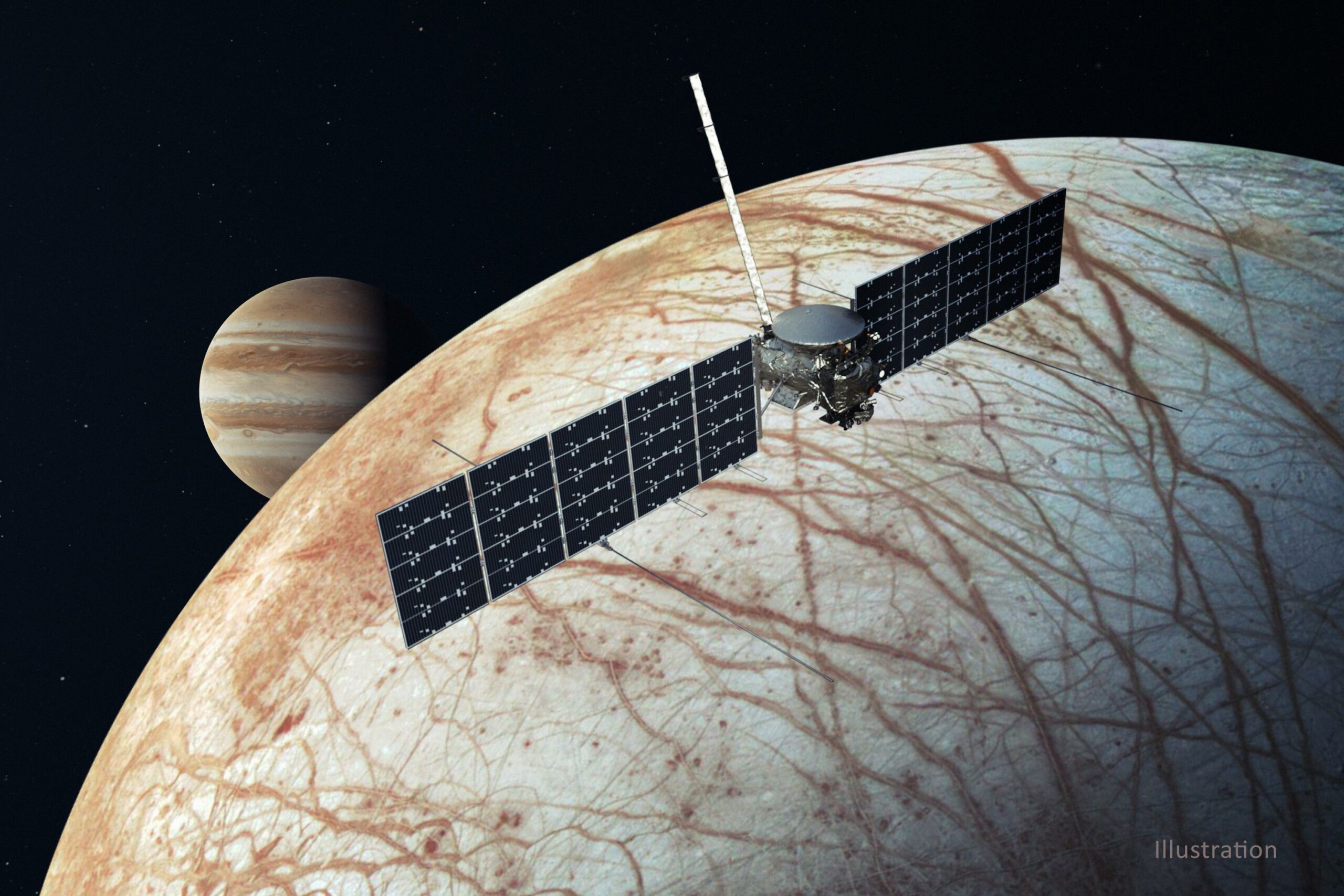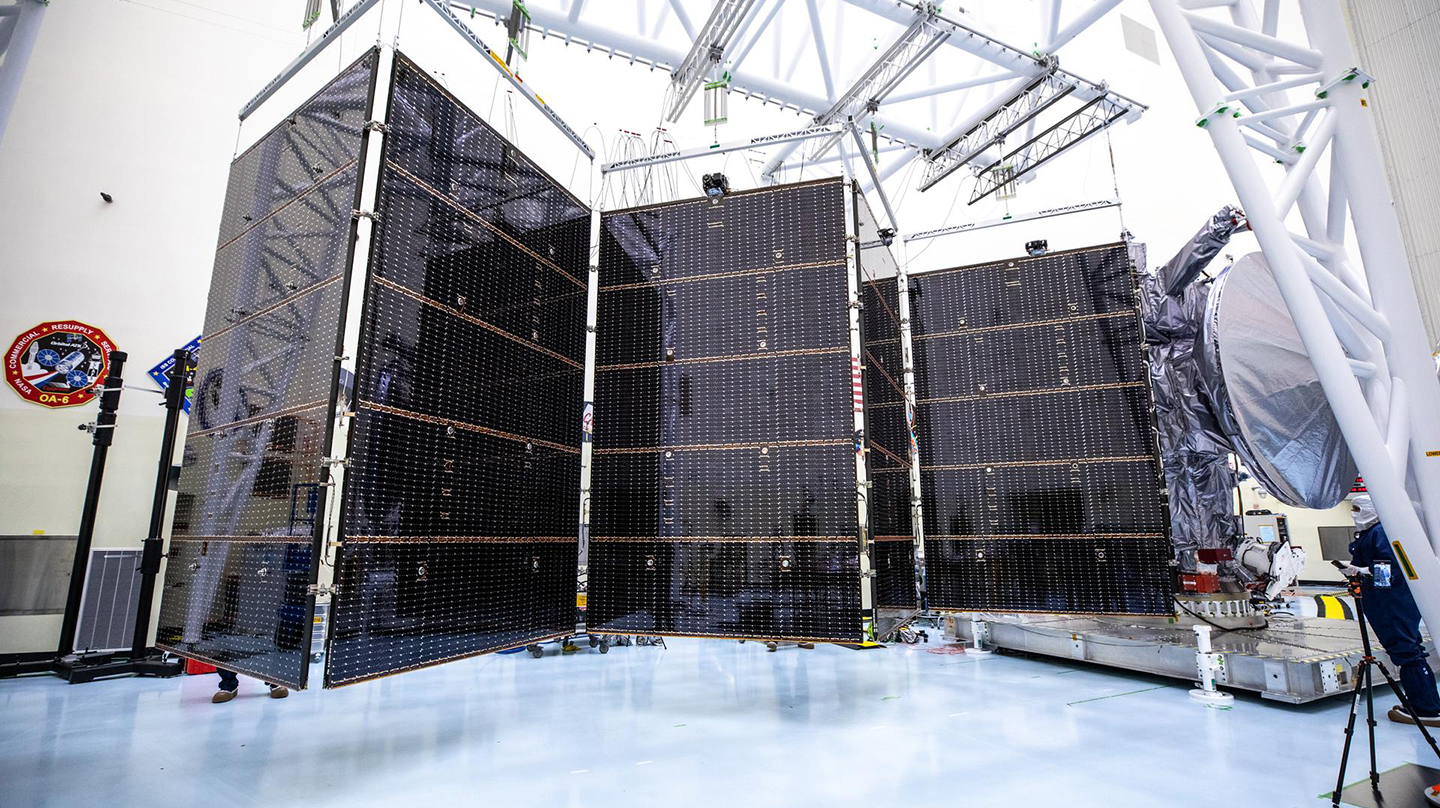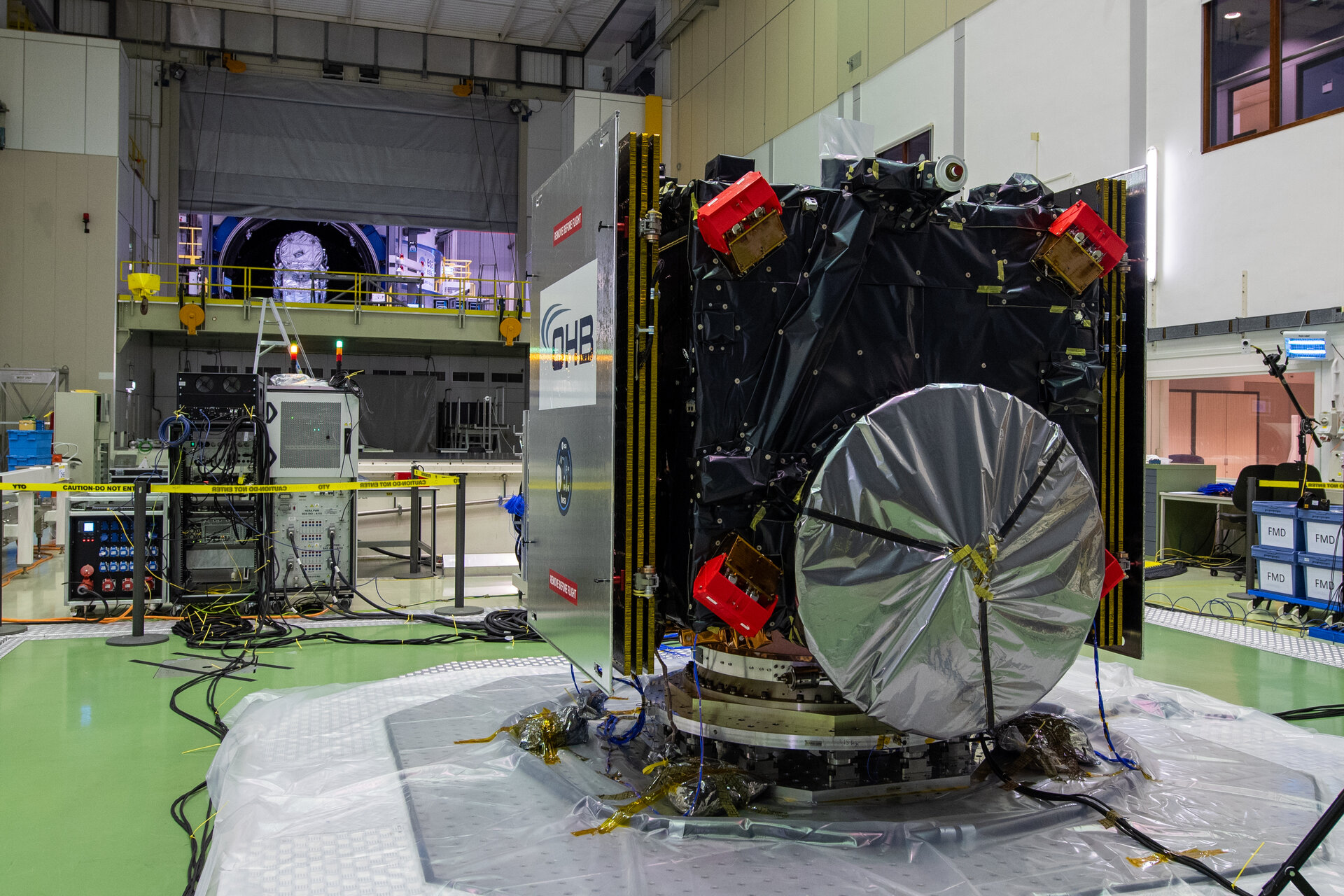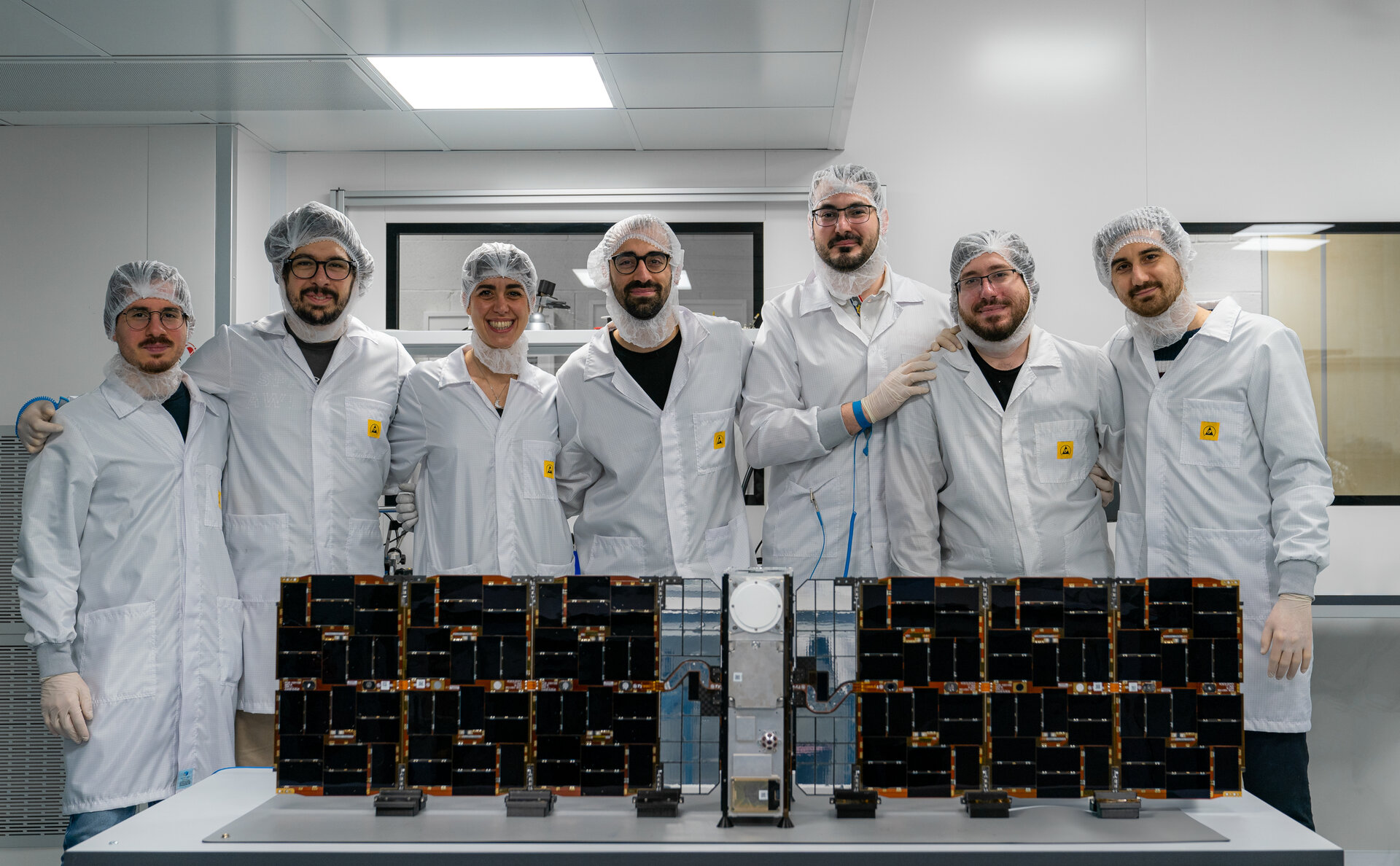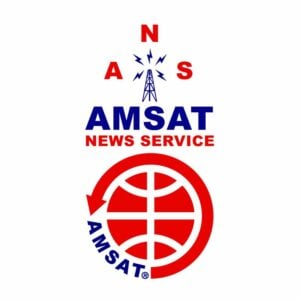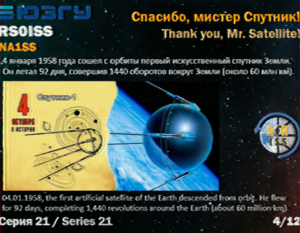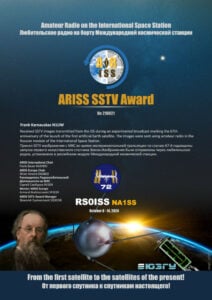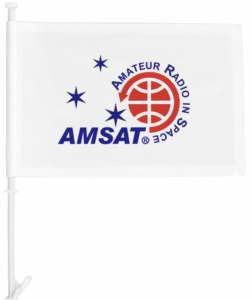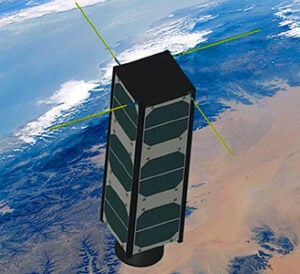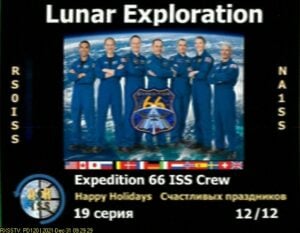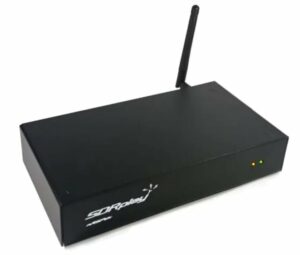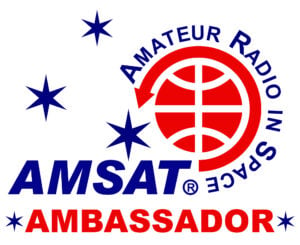In this edition:
* AMSAT Board of Directors Elects Officers
* 42nd Annual AMSAT Space Symposium Held in Tampa
* GridMasterMap Satellite Top 100 Rovers November 2024 Rankings
* CatSat Commissioning is Near
* Administration Eases Restrictions On Space-Related Exports
* Intelsat Satellite Explodes In Orbit
* Changes to AMSAT-NA TLE Distribution
* Reflect Orbital To Sell Sunlight Using In-Space Mirrors
* ARISS News
* Upcoming Satellite Operations
* AMSAT Ambassador Activities
* Satellite Shorts From All Over
The AMSAT News Service bulletins are a free, weekly news and information service of AMSAT, the Radio Amateur Satellite Corporation. ANS publishes news related to Amateur Radio in Space including reports on the activities of a worldwide group of Amateur Radio operators who share an active interest in designing, building, launching and communicating through analog and digital Amateur Radio satellites.
The news feed on http://www.amsat.org publishes news of Amateur Radio in Space as soon as our volunteers can post it.
Please send any amateur satellite news or reports to: ans-editor [at] amsat.org
You can sign up for free e-mail delivery of the AMSAT News Service Bulletins via the ANS List; to join this list see: https://mailman.amsat.org/postorius/lists/ans.amsat.org/
ANS-301 AMSAT News Service Weekly Bulletins
To: All RADIO AMATEURS
From: Radio Amateur Satellite Corporation
712 H Street NE, Suite 1653
Washington, DC 20002
DATE 2024 Oct 27
AMSAT Board of Directors Elects Officers
At its meeting prior to the 2024 AMSAT Space Symposium and Annual General Meeting, the AMSAT Board of Directors elected their officers for 2024-25.
- Robert Bankston, KE4AL, President
- Paul Stoetzer, N8HM, Executive Vice President
- Jerry Buxton, NØJY, Vice President – Engineering
- Drew Glasbrenner, KO4MA, Vice President – Operations
- Alan Johnston, KU2Y, Vice President – Educational Relations
- Frank Karnauskas, N1UW, Vice President – Development
- Steve Belter, N9IP, Treasurer
- Douglas Tabor, N6UA, Secretary
Newly elected First Alternate Director Douglas Tabor, N6UA, has replaced Jeff Davis, KE9V, who stepped down prior to the meeting as AMSAT’s Secretary. The AMSAT Board of Directors expresses its appreciation to Jeff for his work during his tenure as Secretary.
The position of Vice President – User Services remains vacant.
[ANS thanks the AMSAT Board of Directors for the above information]
2024 Coins Are Still Available!
Help Support GOLF and Fox Plus.
Join the AMSAT President’s Club today!
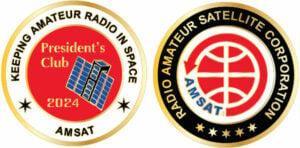
42nd Annual AMSAT Space Symposium Held in Tampa
The 42nd Annual AMSAT Space Symposium and Annual General Meeting took place from October 25-27, 2024, at the DoubleTree by Hilton Tampa Rocky Point Waterfront in Tampa, Florida. This year’s Symposium focused on the latest developments in amateur radio satellite communications, with a variety of paper sessions and events throughout the weekend.
Scheduled presentations included:
- AMSAT-UK Payload on Jovian-1 CubeSat, David Bowman, GØMRF
- CARD-SAT®: A Step Forward for Satellite Miniaturization by Adrian Totu, YO3HOT
- Working QO-100 from Beyond the Nominal Footprint by Graham Shirville, G3VZV
- AMSAT & ARISS Over the Past 40 Years by Frank Bauer, KA3HDO
- MO-122 (MESAT1) Commissioning Recap by Mark Hammond, N8MH
- AMSAT-HB Update by Michael Lipp, HB9WDF
- Fox Plus Update by Mike Moore, K4MVM
- AMSAT CubeSatSim Education Update and Software Overview by Alan Johnston, KU2Y
- Integration of the AMSAT CubeSat Simulator for Education and Research by Rachel Jones, KO4HLC
- ARISS Engineering Update – ISS, Lunar, and Commercial Activities by Randy Berger, WAØD
- Automation and Remote Control of the Inter-Operable Radio System (IORS) on the ISS by Chris Thompson, VE2TCP/GØKLA
- Getting Ready to Receive HamTV from the ISS by Graham Shirville, G3VZV
- GOLF-TEE Flight Software and Bus Overview by Burns Fisher, WB1FJ
- Determination of Orbiting Spacecraft Space Vectors Solely from In-flight Position Measurements by Joseph DiVerdi, KØNMR
- AMSAT Engineering Update by Jerry Buxton, NØJY
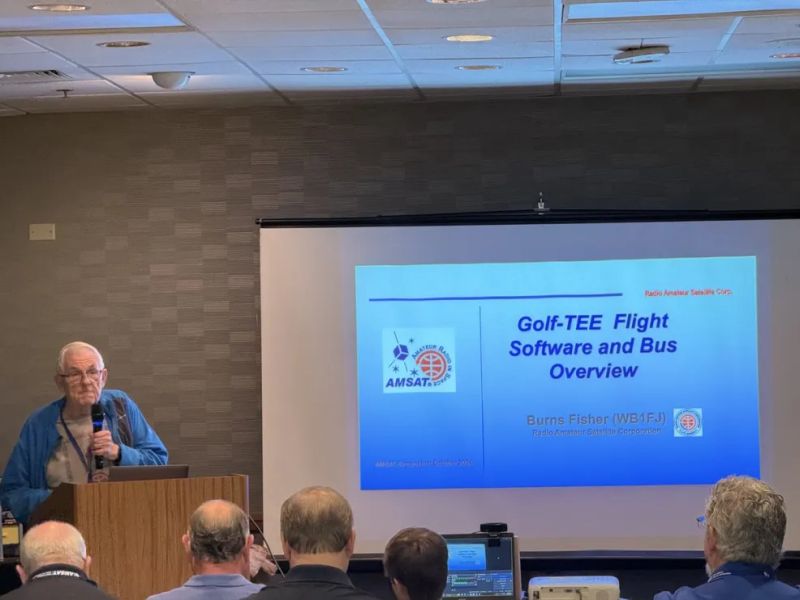
Burns Fisher, WB1FJ, presenting on GOLF-TEE’s flight software. [Photo: AMSAT]
In addition, the AMSAT Annual General Meeting & Awards Ceremony was held on Saturday afternoon, and the AMSAT Banquet was to take place on Saturday evening. A breakfast for AMSAT Ambassadors was scheduled for Sunday morning.
Symposium Proceedings will be available for members on the AMSAT Member Portal as soon as AMSAT volunteers can process the upload.
[ANS thanks Paul Stoetzer, N8HM, AMSAT Executive Vice President, for the above information]
GridMasterMap Satellite Top 100 Rovers November 2024 Rankings
The November 2024 rankings for the Top 100 Rovers (Mixed LEO/MEO/GEO) in satellite operations, as determined by @GridMasterMap on Twitter, has been released. The ranking is determined by the number of grids and DXCC entities activated, taking into account only those grids where a minimum number of QSOs logged on the gridmaster.fr website have been validated by a third party. Grid numbers do not directly reflect the exact number of activations. Satellite operators are encouraged to upload their LoTW satellite contacts to https://gridmaster.fr in order to provide more accurate data.
Updated: 2024-10-25
| 1 | ND9M | 26 | KX9X | 51 | N6DNM | 76 | LU4JVE |
| 2 | NJ7H | 27 | ON4AUC | 52 | JK2XXK | 77 | AA8CH |
| 3 | JA9KRO | 28 | KG5CCI | 53 | EB1AO | 78 | VE1VOX |
| 4 | UT1FG | 29 | N5BO | 54 | SM3NRY | 79 | FG8OJ |
| 5 | N5UC | 30 | K8BL | 55 | EA4NF | 80 | PT9BM |
| 6 | DL6AP | 31 | KE4AL | 56 | JL3RNZ | 81 | KJ7NDY |
| 7 | OE3SEU | 32 | KB5FHK | 57 | XE1ET | 82 | KI7UXT |
| 8 | WI7P | 33 | VE3HLS | 58 | AA5PK | 83 | YUØW |
| 9 | DPØPOL | 34 | KIØKB | 59 | DF2ET | 84 | KB2YSI |
| 10 | K5ZM | 35 | KI7UNJ | 60 | KI7QEK | 85 | N6UTC |
| 11 | N6UA | 36 | LA9XGA | 61 | SP5XSD | 86 | N4DCW |
| 12 | HA3FOK | 37 | PA3GAN | 62 | F4DXV | 87 | WA9JBQ |
| 13 | WY7AA | 38 | F4BKV | 63 | AD7DB | 88 | JM1CAX |
| 14 | N9IP | 39 | JO2ASQ | 64 | VE1CWJ | 89 | VE3GOP |
| 15 | W5PFG | 40 | BA1PK | 65 | KE9AJ | 90 | NØTEL |
| 16 | AK8CW | 41 | N7AGF | 66 | N8RO | 91 | KG4AKV |
| 17 | ADØDX | 42 | VK5DG | 67 | VA7LM | 92 | W8MTB |
| 18 | DL2GRC | 43 | XE3DX | 68 | KM4LAO | 93 | KØFFY |
| 19 | LU5ILA | 44 | VA3VGR | 69 | W1AW | 94 | CU2ZG |
| 20 | F5VMJ | 45 | KEØWPA | 70 | W8LR | 95 | VE7PTN |
| 21 | N4AKV | 46 | PR8KW | 71 | N4UFO | 96 | K6VHF |
| 22 | WD9EWK | 47 | K7TAB | 72 | DL4EA | 97 | AF5CC |
| 23 | NDØC | 48 | KEØPBR | 73 | HB9GWJ | 98 | VE6WK |
| 24 | ADØHJ | 49 | ACØRA | 74 | PT2AP | 99 | DK9JC |
| 25 | DJ8MS | 50 | W7WGC | 75 | M1DDD | 100 | BG7QIW |
[ANS thanks @GridMasterMap for the above information]
Need new satellite antennas?
Purchase M2 LEO-Packs from the AMSAT Store.
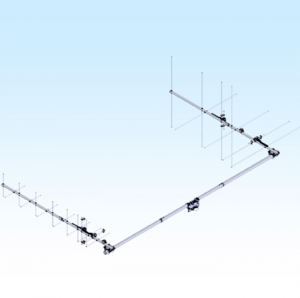
When you purchase through AMSAT, a portion of the proceeds goes towards
Keeping Amateur Radio in Space.
https://amsat.org/product-category/hardware/
CatSat Commissioning is Near
CatSat, a 6U cubesat, was blasted into orbit on July 4, 2024. After some delay, the microwave transponder should be available soon.
The concept was presented at the AMSAT annual symposium on two successive years. The design has not changed significantly since then. See https://catsat.arizona.edu for current info.
The project was run by the University of Arizona students with major support by Rincon Research Corp. (onboard DSP and HF electronics) and FreeFall Aerospace (patch, HF whip, and high-gain 10 GHz. inflatable antenna.) The spacecraft bus was supplied by Gomspace.
Something strange happened during launch or satellite deployment, and the satellite is believed to be damaged by an unknown mechanism. The UHF command and control antenna appears not to have deployed and the main spacecraft computer reboots an irregular pattern. The student team has done an excellent job of keeping the spacecraft under control while troubleshooting the problems, but this has slowed the commissioning process.
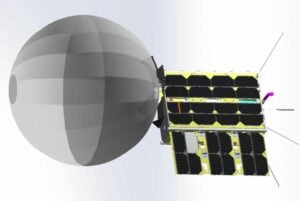
CatSat with inflated spherical microwave antenna [Artist’s rendering: University of Arizona]
SATELLITE MODES OF PARTICULAR INTEREST TO HAMS
- The HF experiment (also known as the WSPR experiment) captures the entire HF band by sampling it with a 50 MHz analog to digital converter. Digital processing in an FPGA creates up to four sub-bands which are stored in CatSat memory. The tuned frequency and bandwidth of these four receivers will likely be changed from time to time on a schedule to be determined. Then the captured pre-detection data will be stored in CatSat’s AstroSDR memory until it can be dumped to our 6.1 meter dish in Tucson. There the sub-band data streams will be extracted and placed on the internet where interested hams will have access. The intent is to provide an opportunity for hams to experiment with ionospheric propagation as viewed by a satellite without having to actually build a ground station. If they work HF stations using FT-8 or WSPR when the satellite is active they will be able to use the internet to access what the satellite was hearing. They may even discover some novel propagation mechanism.
- At the start of each data capture 32k samples of I-Q data will be captured at 50 MHz sample rate. These data can be Fourier transformed to create a spectral power plot of the entire HF band at that location.
- The 10 GHz downlink modulation is DVB-S2. At the time of planning the downlink, there was a lot of AMSAT interest in using DVB-S2 as a downlink modulation for proposed high orbit birds. That drove our decision. Receiving this link will be a challenge for most stations, unless the inflatable antenna experiment is successful and we point that antenna at your location.
- 5.663 GHz to 10.47 GHz transponder with 200 kHz Bandwidth. During design review of CatSat it was realized that there was space for an additional 5 GHz patch antenna on the spacecraft. The AstroSDR could receive 5.663 GHz and translate it to the IF input of the 10.47 GHz transceiver. So a 200 KHz linear transponding mode was added. It is one of the first ham satellites to use these microwave bands.
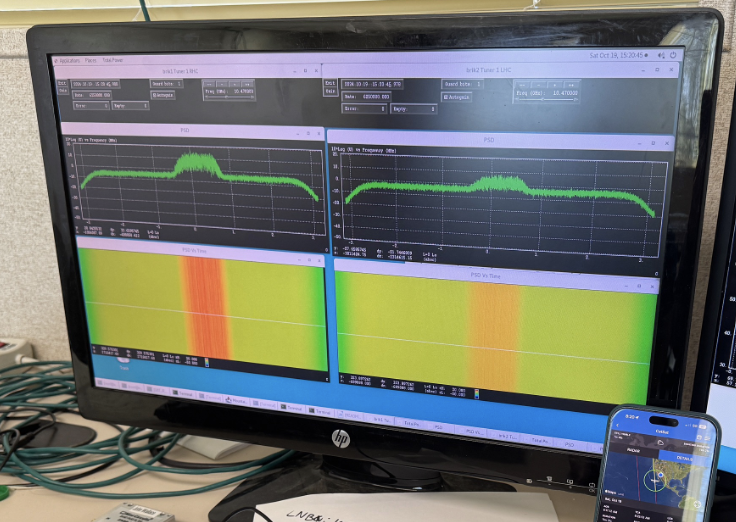
PHOTO OF CATSAT SPECTRUM Oct 20, 2024 at Tech Park
10 GHz Patch used for transmitting generally pointed towards ground station.
6.1 meter AzArray dish for receiving
Max elevation 29 degrees
LCP on left screen
RCP on right screen
2 MHz/div and 10 dB per division
Comment: Transmitting 2 MSymbols/per second of DVB-S2 Dummy Frames
Strong stable signal smoothly varying with time peaking about 20 dB SNR in 2 MHz band.
[ANS thanks Mike Parker, KT7D for the above information]
Administration Eases Restrictions On Space-Related Exports
The Biden administration on Oct. 17 eased export restrictions on U.S. commercial space companies to ship certain satellite and spacecraft-related items to allies and partners.
The changes are intended to make it easier for the growing U.S. commercial space industry to expand sales while also protecting national security and foreign policy interests.
Certain items involving remote sensing spacecraft or space-based logistics assembly, and servicing spacecraft will no longer need licenses for shipment to Australia, Canada, and the United Kingdom, the Commerce Department said in the statement.
Some less sensitive satellite and spacecraft parts and components will no longer require licenses for shipment to over 40 countries. The countries include Canada, Australia, Japan, South Korea and most of the European Union, a person familiar with the matter said.
In addition, the Commerce Department will do away with license requirements for the least sensitive items like electrical connectors for most of the world, but not countries of concern like Russia and China, the person said.
A proposed rule also was published regarding the transfer of jurisdiction of certain space-related defense articles from the State Department to the Commerce Department, making it easier to export them to close allies and partners.
The rules come after a proposed rulemaking nearly five years ago and a December 2023 National Space Council request.
[ANS thanks Reuters for the above information]
Intelsat Satellite Explodes In Orbit
An Intelsat communication satellite built by Boeing has exploded and broken up in geostationary orbit. Intelsat confirmed the news in a press release on Oct. 21, declaring the satellite a “total loss.” The U.S. Space Force said it is tracking around 20 associated pieces but “has observed no immediate threats” to other satellites so far (Roscosmos said it was tracking 80 fragments). The cause of the explosion is not yet known, but the news is another blow for Boeing following Starliner’s failed crew test flight, problems with the 737 Max and delays to the 777x.
Intelsat said it’s working to move customers to its other satellites or third party spacecraft. “A Failure Review Board has convened to complete a comprehensive analysis of the cause,” the company wrote. The satellite was uninsured, a spokesperson told SpaceNews.
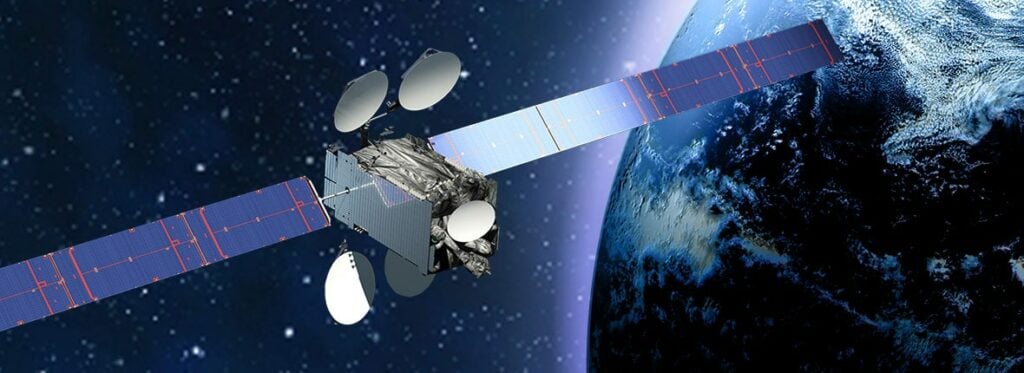
EpicNG [Artist’s rendering: Intelsat]
The explosion fragments could still pose a risk to other satellites. “The problem is that there is a lot of uncertainty regarding the orbits of these fragments at the moment,” said a spokesperson for Spaceflux, a UK company that tracks objects in orbit. “They can be potentially dangerous for other satellites but we do not know that yet.”
Intelsat 33e is one of six “EpicNG” satellites built by Boeing, and uses the latter’s 720MP satellite platform equipped with 16 hydrazine-powered engines built by Aerojet Rocketdyne. The type is widely used for telephone, internet and satellite TV/radio broadcast services.
It entered service three months late due to an issue with its primary thruster, and another propulsion issue reduced its service life by 3.5 years. The first EpicNG satellite, Intelsat 29e, was declared a total loss in 2019 after just three years in service, reportedly due to a meteoroid impact or wiring flaw.
[ANS thanks Engadget for the above information]
Want to fly the colors on your own grid expedition?
Get your AMSAT car flag and other neat stuff from our Zazzle store!
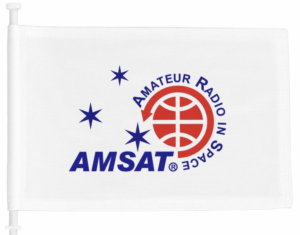
25% of the purchase price of each product goes towards
Keeping Amateur Radio in Space
https://www.zazzle.com/amsat_gear
Changes to AMSAT-NA TLE Distribution for Oct. 25
Two Line Elements or TLEs, often referred to as Keplerian elements or keps in the amateur community, are the inputs to the SGP4 standard mathematical model of spacecraft orbits used by most amateur tracking programs. Weekly updates are completely adequate for most amateur satellites. TLE bulletin files are updated daily in the first hour of the UTC day. New bulletin files will be posted immediately after reliable elements become available for new amateur satellites. More information may be found at https://www.amsat.org/keplerian-elements-resources/.
None reported.
[ANS thanks Joe Fitzgerald, KM1P, AMSAT Orbital Elements Manager for the above information]
Reflect Orbital To Sell Sunlight Using In-Space Mirrors
Instead of being constrained by the physical reality that limits the sun to its daily cycle, imagine a future where the sun can be turned on and off like a flashlight.
This is the future that Reflect Orbital imagines is possible. The startup is developing satellites that would deploy large mirrors to precisely reflect sunlight onto specific points on the ground. Rings of satellites in sun-synchronous orbit would follow the terminator, or the line that separates night and day, providing additional sunlight before dawn and after dusk.
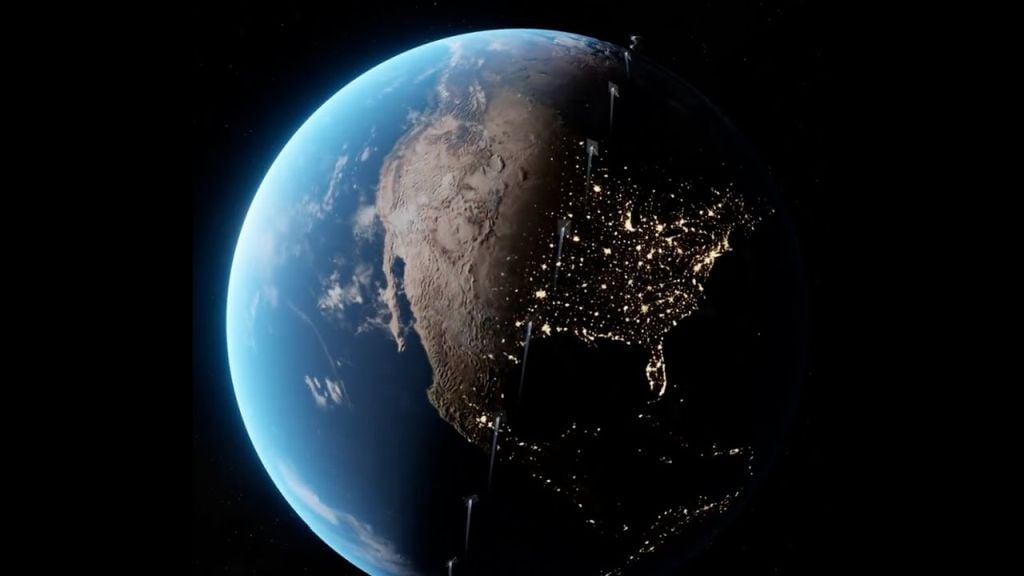
Illustration of illuminated sites [Image: Reflect Orbital]
According to Reflect’s two co-founders, CEO Ben Nowack and CTO Tristan Semmelhack, this extra sunlight could increase the amount of solar power delivered to the electricity grid. Instead of building more solar farms, the pair thinks we can simply increase the amount of power generated at the ones that already exist.
The pair say they are still playing with the final configuration for its production-scale vehicles, like the exact size of the reflective array or the final number of satellites that will make up the constellation. But they are starting small, and the first orbital mission will fly a subscale prototype with a reflector that’s 10 by 10 meters.
Many of the debunking videos cite the 10 by 10 meter figure, which is too small to reflect an economically meaningful amount of sunlight on the ground. A news article from earlier this year also said that the constellation will be just 57 satellites.
But Semmelhack said these figures are inaccurate; 57 satellites ringing Earth will guarantee a half hour of service twice per day, once in the morning and once in the evening, the minimum to achieve the plans to “extend the day.” The pair also say that 10 by 10 meters is “just a starting point”: Full-scale production vehicles will deploy arrays that are much larger, around 50 by 50 meters or bigger, with the planned constellation growing to “thousands to tens of thousands” of satellites.
“The 10 by 10 is our demonstration that will be brighter than a full moon, roughly 400,000 times less bright than the sun at noon,” Nowack explained over email. “Our production service is targeting 1/5 noon sunlight brightness and will use 100’s – 1000’s of larger vehicles focused at one spot. A 50 by 50 satellite is actually on the small end.”
But even given these additional details, the satellites would still need to be capable of maintaining highly precise control over their mirrors on orbit, and do this across many thousands of satellites. It will be a huge challenge.
[ANS thanks Aria Alamalhodaei and TechCrunch for the above information]
ARISS NEWS
Amateurs and others around the world may listen in on contacts between amateurs operating in schools and allowing students to interact with astronauts and cosmonauts aboard the International Space Station. The downlink frequency on which to listen is 145.800 MHz worldwide.
COMPLETED:
Magnet Innovation Center, Inlet Beach, FL, direct via WD9GIU
The ISS callsign was NA1SS. The crewmember was Nick Hague, KG5TMV.
The ARISS mentor was AA4KN
Contact was successful: Thu 2024-10-24 15:23:10 UTC 39 degrees maximum elevation
Congratulations to the Magnet Innovation Center students, Nick, mentor AA4KN, and ground station WD9GIU!
TO BE RESCHEDULED:
Ceip San Ignacio Del Viar, Alcalá Del Rio, Spain, direct via EG7SIV
The ISS callsign is presently scheduled to be OR4ISS. The scheduled crewmember is Don Pettit, KD5MDT.
The ARISS mentor is IKØUSO
Cancelled due to change of crew sleep schedule. ARISS is working very hard to see if this school can be rescheduled for this week.
Watch for Livestream at https://www.youtube.com/live/rLyPkJ0MAPE
UPCOMING:
Coastal Community School, Satellite Beach, FL, direct via KD4GPI
The ISS callsign is presently scheduled to be NA1SS. The scheduled crewmember is Sunita Williams, KD5PLB.
The ARISS mentor is AJ9N
Contact is go for: Wed 2024-10-30 13:42:01 UTC 42 deg
Colegio Parroquial el Savador, Yerba Buena, Argentina, direct via LU5KHF
The ISS callsign is presently scheduled to be NA1SS. The scheduled crewmember is Don Pettit, KD5MDT.
The ARISS mentor is VE6JBJ
Contact is go for: Wed 2024-10-30 15:32:26 UTC 82 deg
The next proposal window for U.S. schools and educational organizations to host an Amateur Radio contact with a crew member on board the ISS opens October 7, 2024 for contacts to be scheduled for July 1, 2025 – December 31, 2025. This proposal window is due to ARISS by November 17, 2024 at 11:59 PM Pacific Time (Nov. 18, 2024, 07:59 UTC). Proposal information and more details such as expectations, proposal guidelines and the proposal form can be found at www.ariss.org.
The crossband repeater continues to be ACTIVE (145.990 MHz up {PL 67} & 437.800 MHz down). If any crewmember is so inclined, all they have to do is pick up the microphone, raise the volume up, and talk on the crossband repeater. So give a listen, you just never know.
The packet system is also ACTIVE (145.825 MHz up & down). Ham TV and SSTV systems are currently STOWED.
As always, if there is an EVA, a docking, or an undocking; the ARISS radios are turned off as part of the safety protocol.
Note, all times are approximate. It is recommended that you do your own orbital prediction or start listening about 10 minutes before the listed time.
The latest information on the operation mode can be found at https://www.ariss.org/current-status-of-iss-stations.html
The latest list of frequencies in use can be found at https://www.ariss.org/contact-the-iss.html
[ANS thanks Charlie Sufana, AJ9N, one of the ARISS operation team mentors for the above information]
Upcoming Satellite Operations
Guyana: Aldir, PY1SAD (ZZ1M), operates from Georgetown as 8R1TM between Oct. 12 and Nov. 24 on 160-10m (CW, SSB, digital modes) and via satellites. QSL via LoTW, eQSL, qrz.com. (From DXNL 2427 – October 9, 2024)
A growing number of satellite rovers are currently engaged in sharing their grid square activations on https://hams.at. By visiting the website, you gain easy access to comprehensive information about the operators responsible for activating specific grid squares. Additionally, you have the ability to assess the match score between yourself and a particular rover for a given pass, while also being able to identify the upcoming satellite passes that are accessible from your location.
[ANS thanks Ian Parsons, K5ZM, AMSAT rover page manager, for the above information]
AMSAT Ambassador Activities
AMSAT Ambassadors provide presentations, demonstrate communicating through amateur satellites, and host information tables at club meetings, hamfests, conventions, maker faires, and other events.
November 2-3, 2024
Stone Mountain Hamfest, ARRL State Convention
Stone Mountain, GA
https://stonemountainhamfest.com/
K4RGK
November 9, 2024
Oro Valley Amateur Radio Club
Marana Middle School
11285 West Grier Rd.
Marana, AZ 85653
https://www.tucsonhamradio.org/copy-of-hamfest-2022
N1UW
February 20-22, 2025
Yuma HAMCON
Yuma, AZ
N1UW
[ANS thanks Bo Lowrey, W4FCL, Director – AMSAT Ambassador Program, for the above information]
Satellite Shorts From All Over
+ HADES-D (SO-121) is decaying fast so it will only last a few days. Current height is near 355 km. Control operators are manually turning on the internal amplifier, so some passes could be in high power, depending on the zone. This has to be done each day because the on board computer is resetting this configuration each 24 hours. (ANS thanks Félix Páez, EA4GQS, of AMSAT-EA for the above information.)
+ In addition to SO-121 (above), UVSQ-Sat, XW-2D and XW-2B are predicted to decay from orbit within days or weeks. (ANS thanks AMSAT-AR [http://lu7aa.org/reenter.asp] for the above information.)
+ The ARRL has released LoTW configuration file version 11.29 adding support for QSOs via MESAT-1 (as MO-122) and SONATE-2 (as SONATE). (ANS thanks ARRL for the above information.)
+ FUNcube (AO-73) is now in Autonomous mode, meaning high power telemetry when in daylight, and transponder in when the satellite is in eclipse. Controllers are watching the effect on its 11 year old batteries. If the batteries suffer badly they will revert to Eclipse mode. All telemetry will be gratefully received — see http://data.amsat-uk.org/ui/fc1-fm for details. (ANS thanks David Johnson, G4DPZ, Honorable Secretary, AMSAT-UK, of the FUNcube Team for the above information.)
+ Crew-8 members, NASA astronauts Matthew Dominick, KCØTOR, Michael Barratt, KD5MIJ, Jeanette Epps, KF5QNU, and Roscosmos cosmonaut Alexander Grebenkin, RZ3DSE, all woke up late on Oct. 21, having shifted their sleep schedules in anticipation of Monday’s departure from the International Space Station. However, they spent the rest of the day continuing their daily exercise routines and standard housekeeping tasks aboard the orbiting lab. NASA and SpaceX officials delayed the undocking until late Wednesday, Oct. 23 due to unfavorable weather conditions near the multiple splashdown zones off the coast of Florida. Splashdown was early Friday, Oct. 25. During routine medical assessments on the recovery ship, an additional evaluation of the crew members was requested out of an abundance of caution. One crew member remained hospitalized Friday evening. (ANS thanks NASA for the above information.)
+ NASA will use SpaceX’s Crew Dragon for its two crew rotation missions to the International Space Station in 2025 as it continues to evaluate if it will require Boeing to perform another test flight of its Starliner spacecraft. In an Oct. 15 statement, NASA said it will use Crew Dragon for both the Crew-10 mission to the ISS, scheduled for no earlier than February 2025, and the Crew-11 mission scheduled for no earlier than July. Crew-10 will fly NASA astronauts Anne McClain and Nichole Ayers along with astronaut Takuya Onishi from the Japanese space agency JAXA and Roscosmos cosmonaut Kirill Peskov. NASA has not yet announced the crew for the Crew-11 mission. (ANS thanks SpaceNews for the above information.)
+ The Mauritius Amateur Radio Society (MARS) portable team, on Oct. 20, enabled many young Scouts of the Mauritius Scout Association (MSA) to communicate with other Scouts around the World on QO-100 GEO satellite. See photos at https://3b8mars.org/2024/10/21/jota-2024/ (ANS thanks Jean Marc Momple, 3B8DU, for the above information.)
Join AMSAT today at https://launch.amsat.org/
In addition to regular membership, AMSAT offers membership to:
* Societies (a recognized group, clubs or organization).
* Primary and secondary school students are eligible for membership at one-half the standard yearly rate.
* Post-secondary school students enrolled in at least half time status shall be eligible for the student rate for a maximum of 6 post-secondary years in this status.
* Memberships are available for annual and lifetime terms.
Contact info [at] amsat.org for additional membership information.
73 and remember to help Keep Amateur Radio in Space!
This week’s ANS Editor, Mark Johns, KØJM
mjohns [at] amsat.org

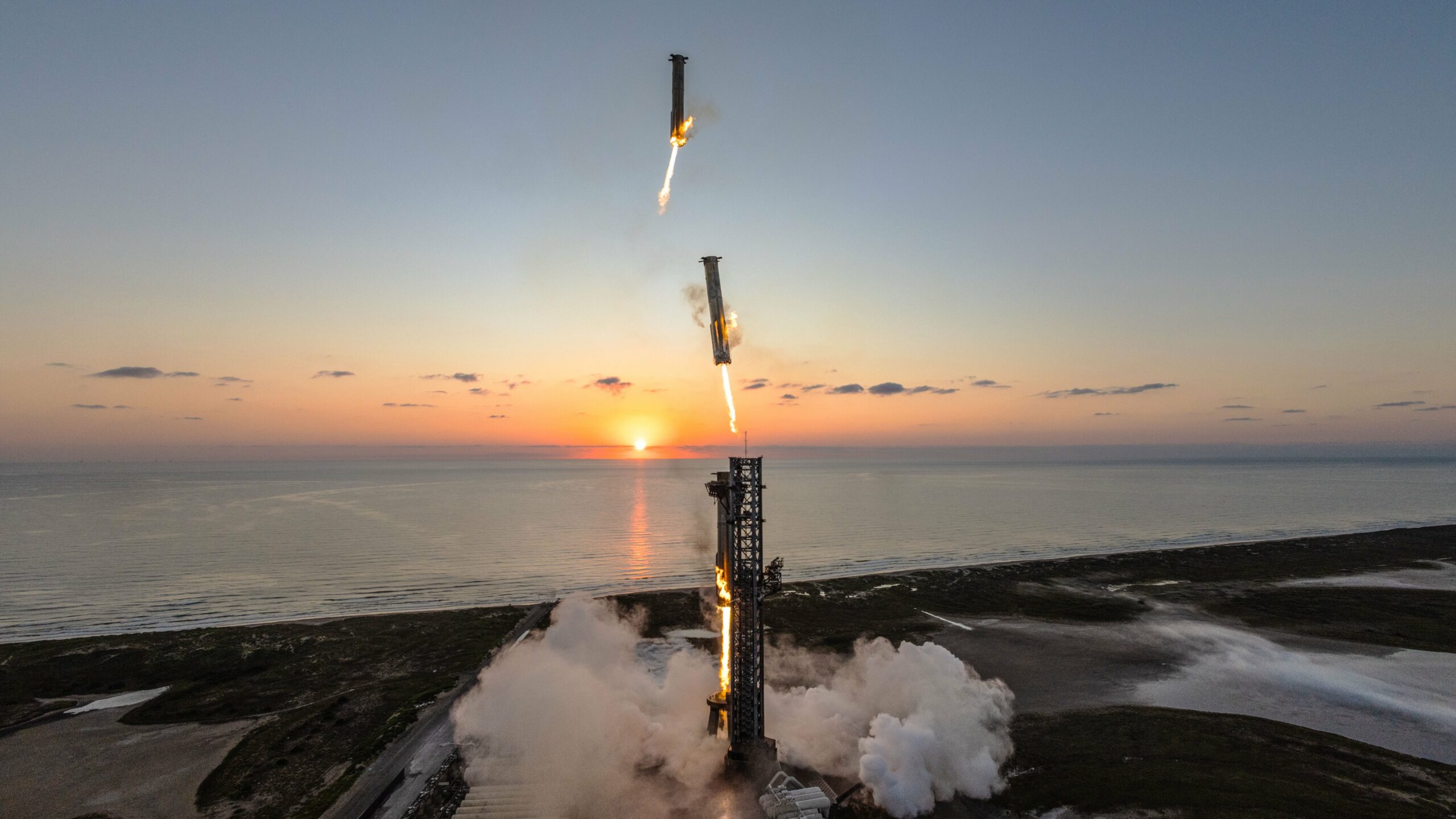
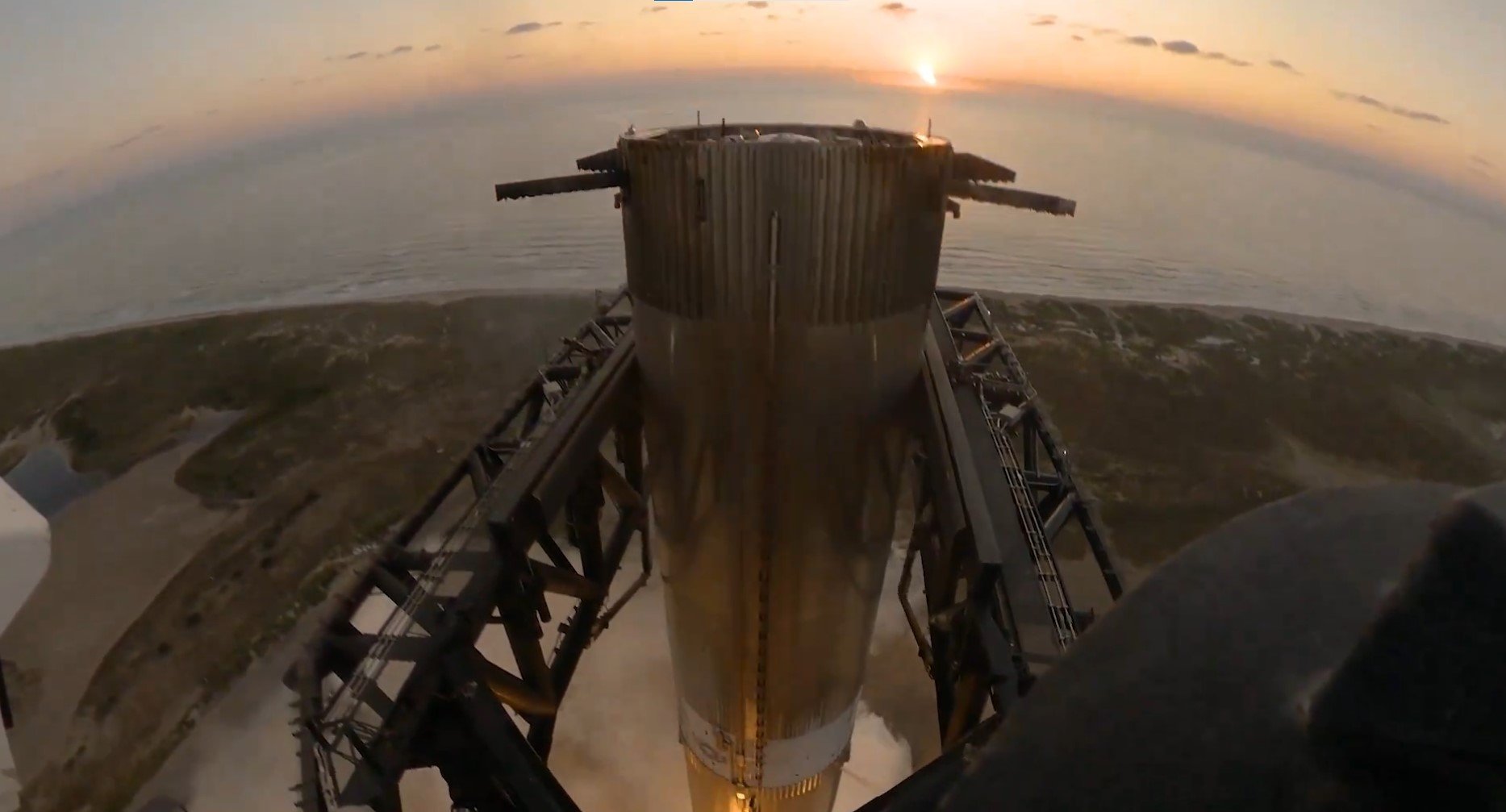
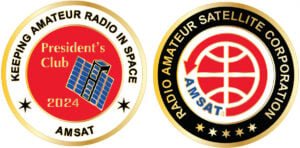 Join the AMSAT President’s Club today and help
Join the AMSAT President’s Club today and help 